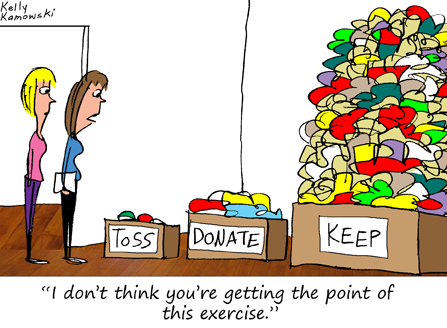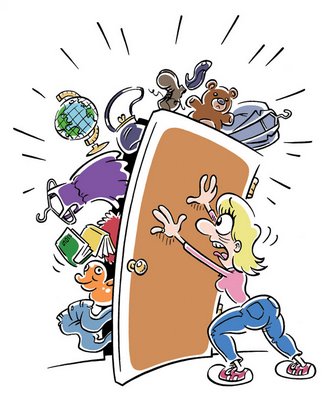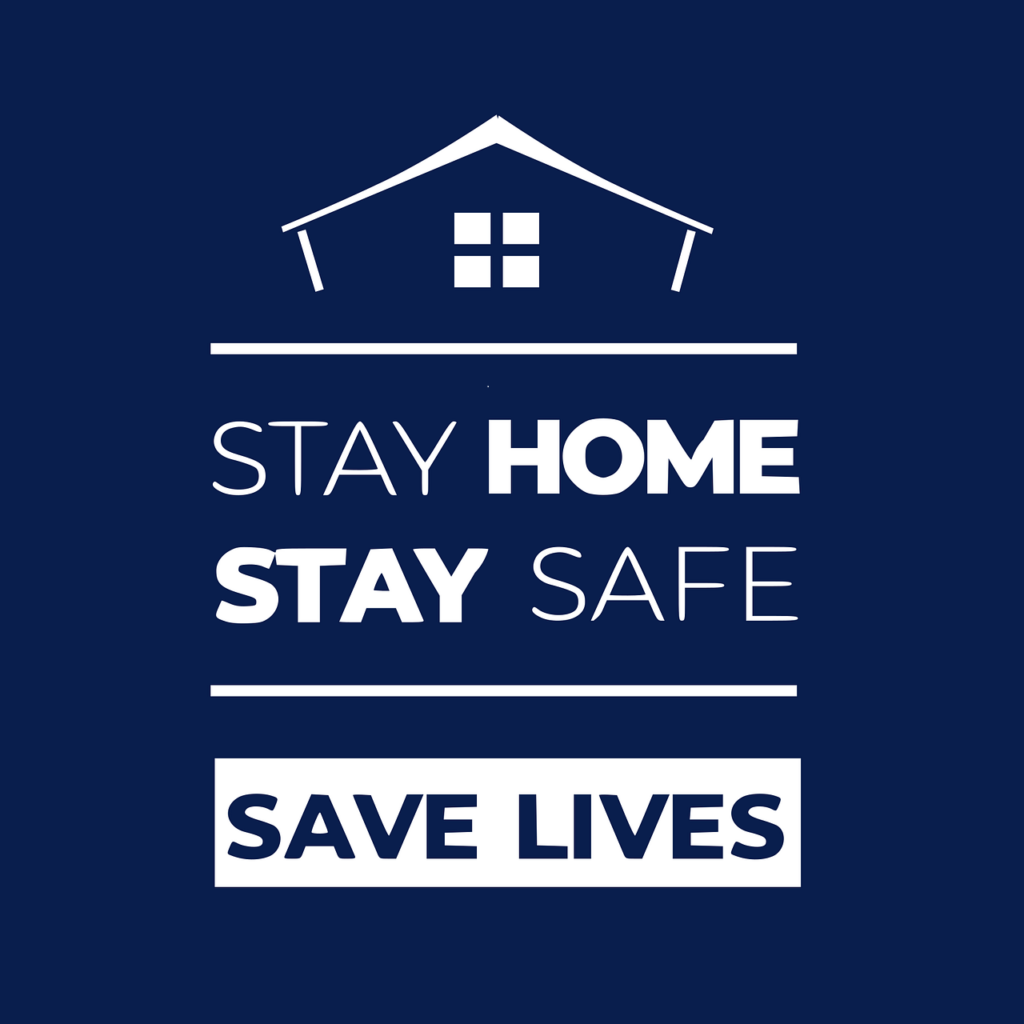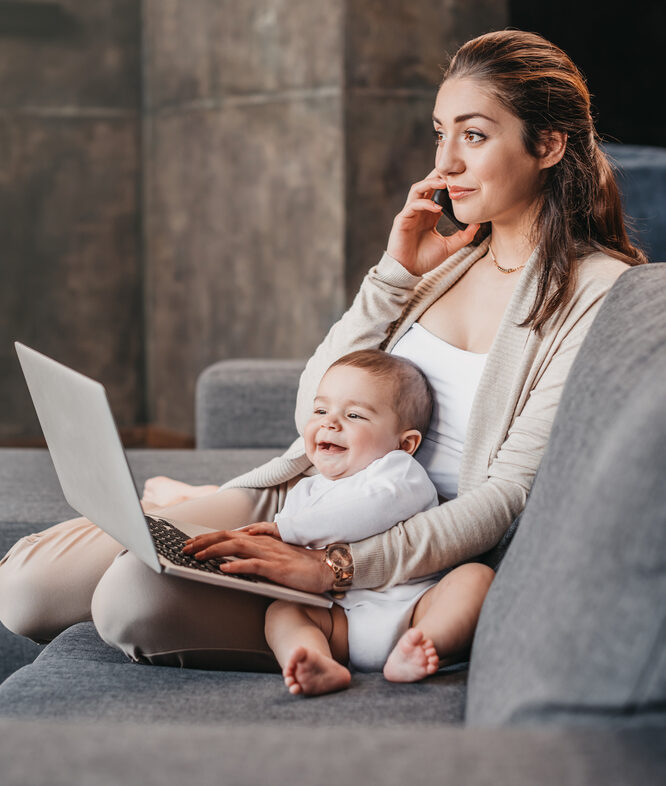Making Adjustments
We are all adjusting to our present environment. I stopped at Wegman’s on Friday afternoon and saw over 70 customers with masks standing about six feet apart and circling around half the huge store. It was a strange feeling and I felt like I was in an old Twilight Zone episode from the 1960’s. I believe the title of the episode could be “Social Distancing” since we hear this term so frequently. I believe it more accurately should be called “Physical Distancing”. Physical Distancing is a more appropriate description as we are looking to have physical distance but not looking to limit our social interaction. I am using Physical Distancing in this blog.
Organizing
I am in the auction business and have had the opportunity to work regularly with Professional Organizers. I have been impressed to recently learn a good number of Professional Organizers offer virtual organizing services. Even more impressive is how many have been virtually organizing with clients for years. Virtual Organizing maintains the physical distancing needed in our challenging environment while providing the social interaction and discipline to focus on tasks. I know this is not always easy when you try to organize alone…

What Can I Sell?
An auction specialist can efficiently help professional organizers and their clients as there is need to sell personal property by identifying valuable items through pictures. Pictures provided electronically (emails, texts, digital albums, etc.) are physical distancing appropriate and the timeliness and efficiency helps keep an organizing project moving forward.

The technology available to provide pictures including details like artist signatures and manufacturer or maker marks has been part of a dramatic change in the auction world over the past 25 years. Wait times to coordinate an initial visit and get started have largely been replaced with progress and information much more quickly through introductory phone conversations and pictures.
STUFFocating
There are many people who have inherited or collected items through the years and these items fill their storage spaces and extra rooms of their homes over time. Many of these clients are what I call “Stuffocating”.

Those feeling like they are Stuffocating do not know how to get started dealing with it all and have little idea which of their old and vintage items have value in today’s market. Their items look like they could be valuable or have family stories indicating they are valuable. I often hear comments like “Aunt Flossie said these were worth money” or “I saw one that looked just like this on “Antiques Road Show”. They often can use some help from a professional organizer and/or auction house to have an effective plan and make noticeable progress.
Physical Distancing for Bidders at Auction
Technology introduced over the past 25 years has helped the selling side of auctions to continue with physical distancing intact. Internet bidding platforms make it easy for buyers to bid on their cell phone, iPad, computer or any device connected to the internet.

Bidding by phone with an auction associate or leaving bids in advance is often available as well. Many auction houses have also added live online bidding available through their own websites.
Auction previews on-site are extremely limited presently. However, good online catalogs provide auction bidders with descriptions and auction estimates as well as an array of pictures showing detail for each item being sold. Online catalogs are typically available on the auction house website as well as the internet bidding platforms.
The Twilight Zone
We are in a dimension of challenge and spacing. Through technology and creativity, we can function in the world of organizing and auctions while we may feel like we are ….In the Twilight Zone.
Author is Tim Zeigler, Kamelot Auction House, www.kamelotauctions.com. Direct contact at 215-815-4983 and .
A recent RieOrganize! poll on Facebook came up with the following: Stay at home. Boredom. Facebook. Zoom meetings. Gratitude for front line workers. Frustration about having to wear a mask. Death. Telecommuting. Homeschooling. Social isolation.
Until recently, I knew of only a handful of friends who were dealing with COVID-19. Most were friends who live out of town or who were dealing with their friends/family members who were dealing with the virus. Yesterday, I was told that a friend is in the ICU with novel coronavirus. While we were not close friends, we did keep in touch over the 30+ years that I’ve known him and his husband.
What I realized today, however, was how much I did not know about them. For instance, who is my friend’s next of kin? My immediate answer would be, of course, his husband. But his husband died last week of a non-coronavirus-related illness. I don’t know if he has a health care directive or, if he does, who is listed as the alternate proxy because his husband just died – or where this document is located. I know that his husband took care of most of their financial, legal and daily responsibilities. I don’t know who will be responsible for all of that now and, more importantly, nor does anyone else. Everyone is scrambling to try to figure out what to do!
While this is indeed stressful and sad, I have to ask myself and you…
· How many of us or our friends or family members could find themselves in a similar situation?
· Have we taken care of our own medical, legal and financial paperwork? If we have, does anyone know where it is located or have easy access to it?
· Will you or someone you know find themselves sick or dying alone with no one who knows what you would want to happen medically or, if you should die, with your belongings?
According to our informal Facebook poll, not everything in our world today is discouraging, heartbreaking, disheartening or grim. Looking at some of the memes on Facebook or Instagram can make you smile or laugh out loud.
There is little wrong with cooking or baking too much, using Zoom or Facetime to be connected to friends, relatives and colleagues, binge watching Netflix or taking naps. There is much kindness, laughter and sharing. Neighbors are helping neighbors.
This can be a time of transformation – interpersonally, socially, economically and globally. It can be a time to focus on the people and things that are important in our lives.
And this is where we all come in to transform our world into a better place in which to live. Thinking about medical and financial preparedness is not high on most people’s lists of things they want to do, but, especially during this time, it is essential.
First, we should examine our own paperwork. How prepared are we? Then, we should take a look at our contact lists. Who do we know who may need help?
Few people want to talk about the possibility of being sick or dying. In this age of COVID-19, it is imperative that we do so and that we talk with those whom we love and help them to prepare as well.
This is something that cannot wait. Please take steps to ensure that someone will know what you want to happen if you are unable to speak for yourself.
Stay well, stay safe and stay home… and if you are one of the many who must go to work to keep us safe, healthy, fed, informed or otherwise (relatively) sane, thank you.

First and foremost, our thoughts and prayers are with those who have contracted this virus. We wish you a speedy recovery. For the rest of us, we face several weeks of home confinement. I don’t know about you but when I stay home for longer than one day, I tend to become lethargic and unmotivated. This time I’m determined not to let that happen. Here’s my plan of action:
Sentimental objects are one of the most challenging categories for professional organizers to help clients with. This is especially true with objects related to family history, such as:
Photographs,
Newspaper clippings,
Family history documents (letters, journals, diaries, invitations, etc.),
Education related (book reports, college papers, graduation diplomas, etc.),
Civil records about family members (marriage records, immigration records, birth/death certificates, etc.)
Photos, diaries, papers, trophies…these are all critical elements of your family legacy. They tell the story of important family members, and are the fabric of what binds families together. Personally, I am not an advocate of throwing this all away. On the other hand, how can anyone benefit if these materials are stashed away in the attic, basement, or closet?
The first step to any family history project is taking an inventory of what you have. Even if your project is simply tidying your family history boxes, you will be happy you did it. And I promise, your children will thank you!
Take some time to go through each box carefully and understand what is in them. It’s almost always the case we find things we had completely forgotten about. And it’s not at all uncommon to find objects we thought were lost. Once you know what you have, it will be much easier to figure out what to keep, and how to organize it all.
One complaint I hear frequently is that people don’t really know what to do with these materials. They accumulate and accumulate, taking up more room than you ever would have wanted. The fear of the materials being damaged, and frustration that nothing productive is being done with them, causes most people to feel anxious, along with a good measure of guilt.
Organizing family history materials allows us to honor family members and declutter. As I mentioned, I am not a fan of throwing these materials away. BUT, you’ll be surprised how much space is being taken up by duplicates, damaged papers/photos, old frames, and photos of people you don’t know—all of which can all be thrown away.
And watch out for newspaper clippings! Newspaper paper does not last. Not only that, it can damage other materials it comes into contact with.
The advent of online publishing has made printing books in small print runs very affordable. Imagine having a book of all your parents’ correspondence, and giving a copy to each of your children. Or imagine assembling all the civil records about your ancestors so the whole family can have a richer understanding of its roots and history. All you need is a scanner and a little patience. If you don’t have the time, there are many scanning services which can do this for you. The Association of Professional Photo Organizers is also a great place to find someone locally who can do this.
Once scanned, it’s time to select an online book publisher. There are many to choose from. Two of my favorites are Blurb and Mixbook. Mixbook in particular has some great layouts just for family history projects. Be sure to wait for a sale! Both these sites frequently offer significant discounts.
It probably won’t surprise you to learn that these books become instant family heirlooms. They make terrific gifts for important birthdays or around the holidays.
If you run into a hiccup while organizing, scanning, or making your book, feel free to give me a call. I’m always happy to answer questions. Good luck with your family history project!

As we head into a new month, continued stay-at-home living in most states, with the kids out of school, and a large percentage of the workforce working from home, most of us are starting to wonder just how much longer we can survive through this pandemic. This downtime has been a blessing for some and a curse for others, and right about now, I bet most of you are struggling with staying busy, maintaining a routine and downplaying anxiety. If you have kids, you might be pulling your hair out amidst boredom, complaining and fights. In my house, we have had high highs and low lows. We have moved almost daily from amazing family moments of laughter and warmth to stressful bouts of fighting and discontent. This rollercoaster might look a bit different for each family, but I think there are some things we can do right now to combat the negatives and approach each new day with a sense of accomplishment and hope. None of this is new, but I know that I personally enjoy the timing of a good reminder when I need it the most.
The main thing that I have been working on lately is to be intentional and own my perspective. We all get bad thoughts occasionally, and with the scary things that the media is sharing, it’s no surprise that most of us are being hit with thoughts of worry, anxiety, and fear. It’s human to feel these things, and we shouldn’t necessarily fight them off when they show up. They are sometimes there to warn us against a real danger or protect us from something that might be about to happen. On the flip side, they can also be brought about or intensified by our imaginations or fears, generated from negative experiences in our past. Owning your perspective involves allowing all thoughts to enter and float by, analyzing them to obtain any useful information as they move, and letting them continue their journey out of your brain. Follow up with a positive affirmation, take a step forward anyway, and change the dynamic. The key for me has been to let the thoughts go. Don’t hold onto them, don’t brew over them, and don’t go to bed at night thinking about them. Instead, read a good book, listen to a motivational podcast, pray with intention, or call up a friend or family member to talk about something else. Simply dismissing a thought can feel easier said than done, but I have found that the magic is just as simple as distracting yourself and replacing the thought.
For the first few weeks after the schools closed, my family and I were all sick, so our lives resembled something like those of a pack of wild dogs, scrounging for food and doing whatever needed to stay alive. I joke, but it felt a bit like complete chaos. As we are healing, we are picking up the pieces, getting the laundry done and assessing the inventory of our pantry. Now is the time to reassess the state of your own household and determine things like what supplies are needed, how schedules will change, and who will be responsible for required household tasks. Reinventing and implementing a routine is key for feeling like you have some control over your situation. If you use a family command center or large calendar, erase the scheduled soccer practices and instead schedule a time for things like school or professional work, exercise, chores and free time.
As you acclimate to your family’s new routine, don’t forget to relax and give yourself some grace in this process. Most of us have never lived through a pandemic like this, and it has literally upheaved our lives in a matter of weeks. Most of us have never been trained to navigate in this time, and we are all in the process of figuring things out as we go. If the dishes are dirty and the laundry is piled up, it’s okay. If the kids are not yet in a home school routine, they will survive. If you are using tissues because the toilet paper ran out, everyone will still be fine. Take a deep breath and remember that you are smart, capable and blessed. If a routine or schedule doesn’t work out as you envisioned, change it. The sky will not fall, and you WILL go on to live another day.
I certainly don’t claim to be a therapist or guru in the art of living, but I can confidently claim the title of a real wife, mom, neighbor and professional who is also learning to navigate this strange time right alongside the rest of you. I am finding that readjusting my perspective to focus on the positive, continuing forward momentum, resuming a routine for my family, and giving myself the grace to show up in whatever capacity that I can bring to each day is helping to make great, slightly sweetened lemonade out of this batch of sour, slightly bruised up lemons lying in front of us.


As Professional Organizers, we spend most of our time helping clients declutter and organize their spaces. But, with the events that have been unfolding over the past few weeks with the coronavirus, change has been thrust upon us. Some of us may be annoyed or feel inconvenienced by this change. Others may feel down right scared by all the uncertainty of the situation. Wherever you fall on that spectrum, figuring out how to adjust our daily lives to deal with the new restrictions can be overwhelming or stressful. To support you through this difficult time, we’ve put together some organizing suggestions to help you manage under these new circumstances.
We all want to make sure we have enough food and cleaning products to take care of ourselves and our families while we are being asked to self-quarantine and engage in social distancing. And while we support your need to have enough food; we urge you to think strategically about what you’re bringing into your space. How much milk will your family drink in a 2-week period? How many times will they tolerate eating mac n’ cheese in 2 weeks?
Also think about where you’re going to store the items you bring into your home. Where will you put the extra 30 rolls of toilet paper? This might be a good time to look through your cabinets and get rid of expired products to make space. If you still don’t have room in your cabinets or pantry, you may need to consider other options, like storing items in another room. That three-shelf bookcase with unread books might be the perfect spot for your extra canned goods.
With the steady increase of people testing positive across the country, many of us have been asked to work from home. Many schools have closed, and children are switching to online learning. This can create a challenging situation for parents, especially when everyone may need their own space to take that conference call or listen to their teacher’s online lesson.
Some are fortunate to have a dedicated office space at home, but what if you don’t have that space and both parents are working from home? What if you have multiple kids who need to complete online schoolwork? What makes the most sense for your family? Can the kids do their school lessons in their bedroom? Can you use your dining room as an office? Do you need to alternate schedules? Can your partner can use the office in the morning, and you use it in the afternoon? Or, they use it today and you use it tomorrow? Will your employer let you work evenings while your partner works during the day so someone can tend to the little ones? If multiple family members need to work in the same room or space, perhaps use headphones or ear buds to reduce background noise. It may take a bit of trial and error until you find a setup that works for your family, however, a little bit of planning and organizing can go a long way to reducing stressful events throughout your workday.